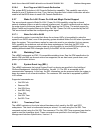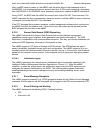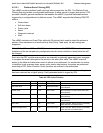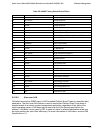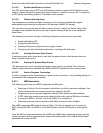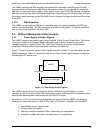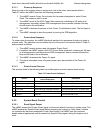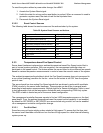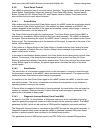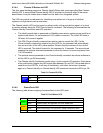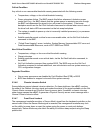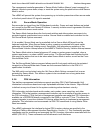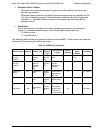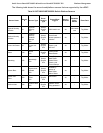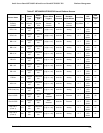
Intel® Server Board SE7320SP2 & Intel Server Board SE7525GP2 TPS Platform Management
Revision 2.0
122
5.3.4 Front Panel Control
The mBMC provides the main ‘front panel control’ functions. These include control of the system
Power Button, Reset Button, Diagnostic Interrupt (Front Panel NMI) Button, System Identify
Button, System ID LED, Status/Fault LED, and Chassis Intrusion Switch. Front panel control
also includes the front panel lockout features.
5.3.4.1 Power Button
After de-bouncing the front panel Power Button signal, the mBMC routes the signal state directly
to the chipset Power Button signal input. If the chipset has been initialized by the BIOS, the
chipset responds to the assertion of the signal by requesting a power state change. It reacts to
the press of the switch, not the release of it.
The Power Button signal toggles the system power. The Power Button signal to the mBMC is
activated by a momentary contact switch on the front panel assembly. The mBMC de-bounces
the signal. After de-bouncing the signal, the mBMC routes it directly to the chipset via the Power
Button signal. The chipset responds to the assertion of the signal. It responds to the press of the
switch, not the release of it.
If the system is in Secure Mode or the Power Button is forced protected, then when the power
switch is pressed, a Platform Security Violation Attempt event message is generated and no
power control action is taken.
In the case of simultaneous button presses, the Power Button action takes priority over all other
buttons. For example, if the sleep button is depressed for one second and then the Power
Button is pressed and released, the system powers down. Due to the routing of the de-bounced
Power Button signal to the chipset, the power signal action overrides the action of the other
switch signals.
5.3.4.2 Reset Button
The reset button is a momentary contact button on the front panel. Its signal is routed through
the front panel connector to the mBMC, which monitors and de-bounces it. The signal must be
stable for at least 25ms before a state change is recognized.
An assertion of the front Panel Reset signal to the mBMC causes the mBMC to start the reset
and reboot process. This action is immediate and without the cooperation of any software or
operating system running on the system.
If Secure Mode is enabled or the button is forced protected, the reset button does not reset the
system, but instead a Platform Security Violation Attempt event message is generated. The
reset button is disabled in sleep mode.
5.3.4.3 Diagnostic Interrupt Button (Front Panel NMI)
As stated in the IPMI 1.5 Specification, a Diagnostic Interrupt is a non-maskable interrupt or
signal for generating diagnostic traces and core dumps from the operating system. The mBMC
generates the NMI, which can be used as an OEM-specific diagnostic front panel interface.
The Diagnostic Interrupt button is connected to the mBMC through the front panel connector. A
Diagnostic Interrupt button press causes the mBMC to generate a system NMI pulse whose
duration is platform-specific and unrelated to the button press duration.
This generates an event (NMI button sensor) and PEF OEM action causes NMI generation.



